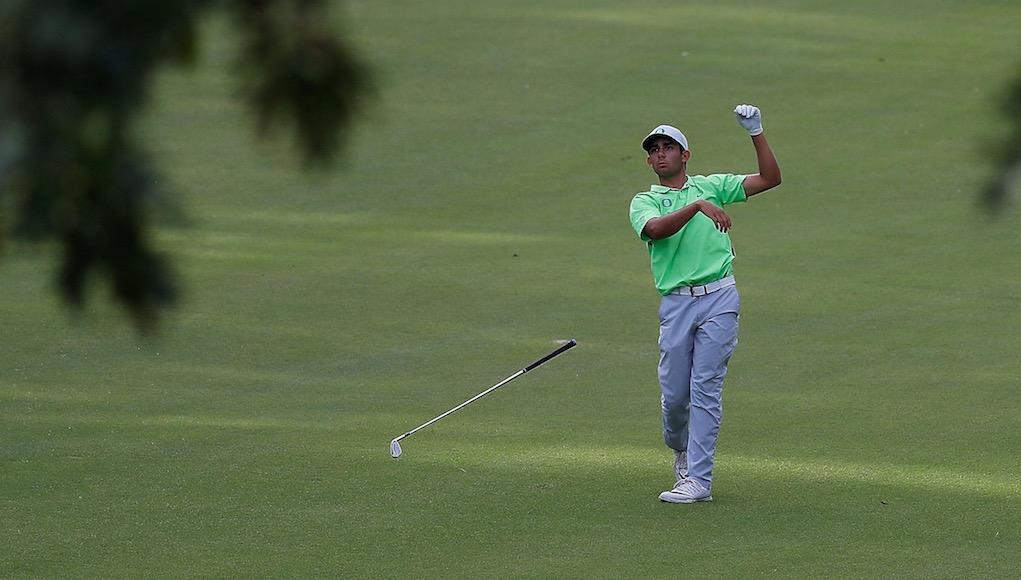Introduction
The convergence of biomechanics and mental strategies in sports performance has gained significant traction in golf instruction, particularly through the innovative methods of Padraig Harrington. A prominent figure in the golfing community, Harrington’s three major championship victories are attributed not only to his physical skills but also to his adept use of mental techniques and biomechanical principles. This article aims to clarify the methodologies that Harrington employs in his golf lessons, highlighting how his integration of advanced biomechanical practices enhances swing mechanics while promoting overall athletic efficiency. Additionally, it will delve into the cognitive strategies he emphasizes—such as visualization and emotional regulation—that create an optimal psychological environment for peak performance on the course. By merging these two domains, Harrington equips players with both technical skills and mental tools necessary for overcoming competitive challenges, thus fostering a thorough approach to improving their game.
Biomechanical Foundations of Padraig Harrington’s Golf Techniques
Padraig Harrington’s swing technique showcases a harmonious blend of biomechanics that prioritizes stability, power, and precision. His distinctive grip and posture facilitate optimal alignment and balance throughout each swing. Key biomechanical components include:
- Ground Reaction Forces: By effectively utilizing ground forces beneath him, Harrington generates critical stability while transferring energy through his swing.
- Hip and Spine Rotation: His notable hip and spine rotation not only aids power generation but also enhances efficiency while minimizing injury risks.
- Follow-Through Mechanics: The follow-through phase is equally crucial; he ensures controlled deceleration vital for accuracy which allows a smooth transition back to a balanced stance.
The efficacy of a golf swing is largely grounded in the principles of biomechanics, which detail how forces interact with the body structures to produce motion. Understanding these interactions allows golfers to enhance their performance by focusing on body mechanics throughout the swing phases. Key elements include:
- Torque Generation: The rotational force created by the lower body is crucial for maintaining balance and increasing clubhead speed.
- Energy Transfer: Proper sequence in energy distribution from the ground up maximizes the potential energy translated into the swing.
- Postural Alignment: Correct posture facilitates optimal swing mechanics, minimizing energy loss and maximizing efficiency.
Mental techniques are equally crucial in enhancing Harrington’s performance. His cognitive approach centers around visualization, establishing routines, and positive reinforcement. Through mental imagery, he sharpens focus by visualizing successful shots prior to execution. Key elements of his mental game include:
- A Consistent Pre-shot Routine:This routine helps him enter a focused mindset essential for maintaining concentration under pressure.
- Positive Self-Talk:This practice reinforces confidence through self-affirmation leading to a success-oriented mindset.
- Cognitive Course Management Techniques:This strategy enables effective decision-making based on environmental conditions during play.
The synergy between biomechanics and cognitive strategies forms the foundation of Harrington’s instructional methods. By analyzing this approach closely, learners can adopt similar principles aimed at refining their swings while enhancing overall golfing performance. Notable instructional highlights include:
| Instructional Focus | Description |
|---|---|
| Biomechanics In Action | Emphasizing grip importance, stance, and alignment for accuracy. |
| Mental Conditioning | Encouraging routine establishment that enhances focus. |
| Adaptive Techniques | Teaching golfers how to adjust techniques based on feedback. |
Integrating Visualization Strategies for Enhanced Performance
The incorporation of visualization techniques into golf practice considerably boosts both performance levels as well as psychological resilience. Padraig Harrington underscores this mental strategy by urging golfers to vividly imagine their desired outcomes before executing shots; this process fosters focus while building confidence—transforming mental rehearsal into an effective complement alongside physical training efforts. By picturing each stroke meticulously, players gain deeper insights regarding their mechanics whilst nurturing expectations geared towards success. To maximize visualization effectiveness, consider these aspects:
- Clearly Defined Intentions: Set specific goals per round or practice session.
- Process Visualization: Envision both swing mechanics along with intended ball flight paths.
- Emotional Regulation: Visualize managing emotions during high-pressure scenarios such as final holes.
This structured methodology prepares athletes mentally whilst fortifying emotional stability leading towards improved decision-making capabilities. In addition, individual practices and team sessions can benefit from collective visualization exercises creating shared experiences which enhance bonding among teammates aligning performances toward common objectives.
The Role Of Emotional Regulation In Competitive Golf
In competitive golf, mastering one’s mentality proves just as vital if not more so than perfecting one’s swinging technique. Padraig Harrington emphasizes how crucial emotional regulation becomes, allowing players to manage feelings amidst high-stakes situations. This skill enables golfers to maintain composure, ultimately resulting in better performances out on the course. Staying calm under pressure can be cultivated via various methods including visualizations where individuals envision successful shots, thereby reinforcing confidence even when faced with adversity. Moreover, emotional stability directly influences decision-making and shot execution. Studies conducted by experts within the field reveal those who effectively regulate emotions experience fewer distractions enabling clearer thought processes during shot executions. As they learn to reframe negative experiences and maintain optimistic outlooks, they develop resilience, reducing the likelihood of errors caused by stress and anxiety especially in critical moments of competition.
To assist in the betterment of emotional regulation, Harrington advocates for setting personal goals aligned with both emotional & performance objectives focusing on specific targets empowers players to evaluate responses and adjust accordingly. Here are key strategies integrated into practice sessions:
| Key Strategies | Application |
|---|---|
| Positive Self-Talk | Reinforce confidence through affirmations. |
| Routine Progress | Maintain consistency in pre-shot routines. |
| Reflective Practice | Regularly review performance to adapt strategies. |
Practical Applications Of Cognitive Techniques In Swing Mechanics
Integrating cognitive approaches into swinging mechanics using Padraig Harrington’s teachings yields substantial benefits across all player levels. Adopting slow-motion drills serves a pivotal role in refining mechanical aspects, encouraging heightened attention to specific elements of swings, allowing thorough analysis of movements, and critically understanding kinematic sequences and muscle coordination ultimately leads to improved full-speed performances.
Additionally, mental imagery emerges as a powerful tool emphasized throughout instruction guiding students to visualize successful strokes, enhancing spatial awareness and preparing motor pathways for execution, reinforcing proper mechanics, alleviating anxieties, and boosting self-confidence. Consistent application cultivates intuitive grasp of swings, translating clarity into physically proficient movements.
| Cognitive Technique | Practical Application |
|---|---|
| Slow-Motion Practice | Fosters detailed analysis of swinging mechanisms |
| Mental Imagery | Enhances spatial awareness and builds confidence |
Integrating these cognitive strategies aids mastery over swinging mechanisms, substantially elevating overall gameplay by prioritizing clear focuses on proper executions. Harrington’s methodology empowers players by breaking complex movements into manageable components, engaging deeply, promoting neural adaptability, strengthening connections between thoughts and actions, and cultivating robust effective swings that can withstand the pressures of competition.
Assessing the Impact of Biomechanics and Mental Strategies on Player Development
Biomechanics plays a pivotal role in optimizing golfing prowess, illustrated beautifully through Padraig Harrington’s approaches analyzing grips, postures, and swinging reveals meticulous tuning to enhance accuracy and distance control. Attention to detail manifests in several key areas such as club speed, path, and follow-through stability. Unique grips allow better face control, supporting balanced and powerful swings, underscoring the necessity of development.
Equally important, physical aspects lie within the incorporated teaching, emphasizing the significance of visualizations, course management, and stress management, working in tandem to demonstrate comprehensive player development. This fosters technique fortitude while developing mindsets conducive to high performance, effectively handling pressures in competitions.
| Biomechanics Focus Areas | Mental Strategies |
|---|---|
| Grip Control | Visualization Techniques |
| Posture | Course Management |
| Swing Mechanics | Stress Management |
Harrington’s instructional methodology bridges the gap between biomechanics and cognition, essential for aspiring golfers, fostering dimensions that develop a holistic understanding of the game. This leads to improved performances through integrating principles that prepares physically and equips them to navigate the complexities of competitive environments, thus serving as a model for future developments ensuring that balance maximizes potential.
The Way Forward
Padraig Harrington’s approach presents a compelling synthesis of rigorous biomechanics coupled with strategic cognition underpinning successes as a mentor. Examining fundamentals utilizes principles that enhance efficiencies, moreover incorporating techniques like visualizations fosters environments conducive to peak performance, allowing players to navigate the complexities of the sport confidently. As the field evolves, interdisciplinary insights enrich understanding and provide aspiring golfers valuable knowledge to elevate their play, contributing to a legacy defined by achievements amplified in the broader discourse of instruction and development.
Unlocking Your Golf Potential: The Power of Biomechanics and Mental Mastery in Padraig Harrington’s Lessons
Meta Title:
unlocking Your Golf Potential: Biomechanics & Mental Mastery in Padraig Harrington’s Techniques
Meta Description:
Explore the synergetic power of biomechanics and mental mastery in Padraig Harrington’s golf lessons. Enhance your game with scientific techniques and psychological strategies.
Understanding Biomechanics in Golf
What Are Biomechanics?
Biomechanics in golf refers to the study of movement and the mechanics of the human body during a swing. This scientific approach helps golfers improve their performance by understanding the forces at play.
Key Components of Biomechanics in Harrington’s Technique
- Grip: Padraig Harrington’s grip is a fundamental aspect of his golfing technique. A proper grip allows for better club control and generates more consistent shots.
- Posture: Maintaining an athletic stance sets the stage for an effective swing. Harrington emphasizes a balanced posture that aligns the body with the target.
- Swing Mechanics:
- Backswing: A controlled and smooth backswing establishes the potential for power and accuracy.
- Downswing: Focus on generating speed and leveraging body weight for maximum impact.
- Follow-Through: An effective follow-through is crucial for maintaining balance and achieving consistent distance control.
Performance Benefits of Biomechanics
- Improved Accuracy: By understanding swing mechanics, golfers can repeat successful motions consistently.
- Enhanced Power: Utilizing body mechanics increases swing speed, resulting in longer drives.
- Injury Prevention: Proper technique reduces stress on joints and muscles, minimizing the risk of injuries.
The Role of Mental Mastery
What is Mental Mastery?
Mental mastery involves the psychological aspects of golf, including focus, confidence, and emotional regulation. It’s essential for peak performance in high-pressure situations.
Harrington’s Mental Strategies
- Visualization Techniques: Envisioning successful shots helps in executing them on the course. Harrington insists that players should picture their desired outcomes.
- Positive Affirmations: Encouraging self-talk can promote confidence and reduce anxiety.
- Mindfulness and Focus: Staying present during play helps golfers to maintain clarity and sharp focus.
Benefits of Mental Mastery
- Increased Confidence: Believing in one’s abilities improves performance and reduces hesitation.
- Better Decision Making: Clarity in thinking leads to smarter tactical choices during play.
- Emotional Resilience: Learning to manage emotions allows golfers to rebound quickly from errors.
Practical Tips for Mastering Biomechanics and Mental Fitness
Incorporating Biomechanics into Practice
- Video Analysis: Record your swings and analyze them to identify areas for enhancement.
- Drills: Practice specific drills targeting grip, posture, and swing consistency.
Sample drills:
| Drill Name | Objective | Description |
|——————–|———————————–|————————————-|
| Alignment Drill| Encourage correct posture | Use alignment sticks for guidance |
| Swing Tempo | Improve swing rhythm | Use a metronome to pace swings |
| Balance Drill | Enhance follow-through balance | Practice swings on one leg |
Enhancing Mental Mastery
- Daily Mindfulness Practice: Engage in mindfulness or meditation to improve focus and reduce pre-game jitters.
- Goal Setting: Define clear, achievable goals for both practice and play to maintain motivation.
Case Studies in Golfing Mastery
Success Stories Inspired by Harrington
- Golfing Academy Insights: Many students of Harrington’s have reported improved scores and reduced swing errors by applying his biomechanical principles.
- Psychological Resilience in Competitive Play: Players adopting Harrington’s mental strategies have excelled under pressure, showcasing the effectiveness of his integrated approach to training.
First-Hand Experiences
Testimonials from Students
- “By focusing on my grip and posture like Harrington teaches, I’ve seen a noticeable improvement in my accuracy.”
- “Incorporating visualization techniques into my practice has been a game-changer. It feels like I’m playing better every time.”
Conclusion
By unlocking the combined power of biomechanics and mental mastery, golfers can enhance their skills and performance. Padraig Harrington’s lessons serve as a complete guide to achieving golfing excellence. Embrace these techniques to find your golfing potential and enjoy the journey to becoming a better player!






